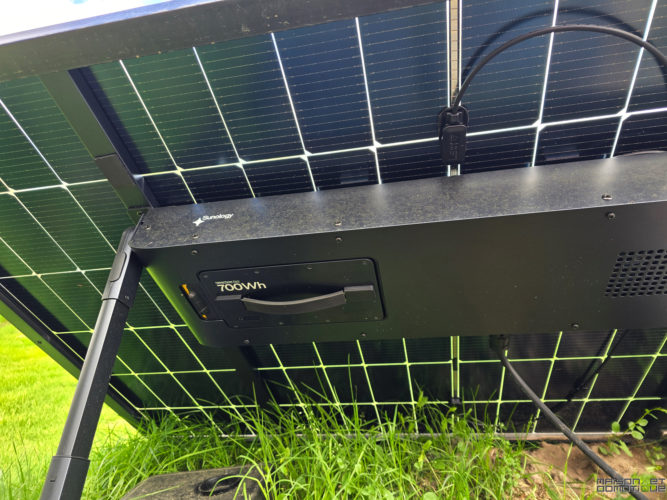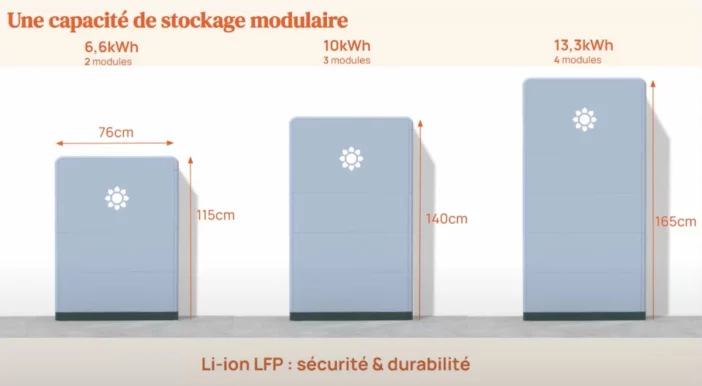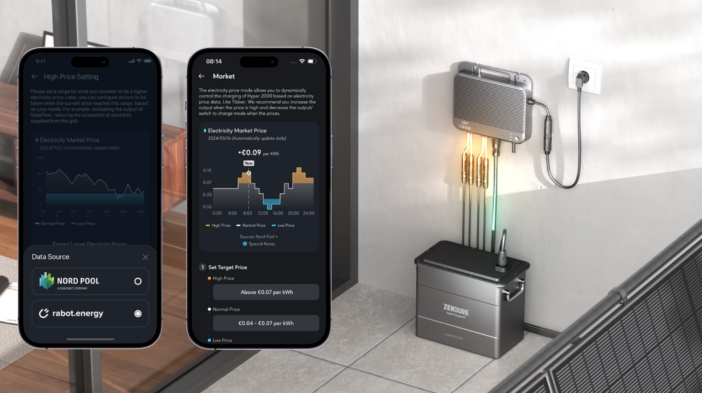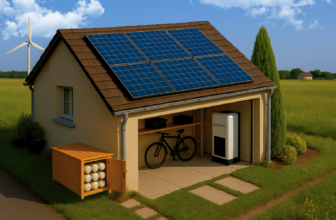Here’s a little revolution that’s entering the quiet — but booming — world of solar self-consumption. On March 26, 2025, a new decree was published in the Official Journal, and pay attention: it’s going to seriously shake up our energy consumption habits. The S21 decree, that’s its little name, disrupts how individuals produce, consume, and sell their photovoltaic electricity. And above all, it puts energy storage at the heart of the system.
So, let’s take a deep breath and dissect this fresh wind on solar panels made in France together.
Solar self-consumption was already great
First, a little return to what we call “solar self-consumption.” For a few years now, more and more individuals have been investing in photovoltaic panels to produce their own electricity — often installed on the roof of their homes, casually. Producing what you consume is good for the planet, for your wallet, and for energy independence. The good life, right?
Until recently, those who produced more electricity than necessary could sell the surplus without too many questions. EDF OA (Purchase Obligation) or other operators took care of it at a fixed price, guaranteed for 20 years. One could say it was a nice little soft cushion for individuals and small producers.
But with the arrival of the S21 decree… everything changes.

The S21 decree: a new milestone for individual solar
So, what exactly does the famous S21 decree say? Its objectives are threefold: stabilize the national grid, limit uncontrolled injections of electricity into the network, and encourage local storage. In short, the state wants those who produce solar energy not to dump all their excess kilowatt hours into the electrical grid (which already struggles to maintain balance during production peaks).
The direct consequence? New installations of photovoltaic panels beyond 3 kWc must now justify an integrated storage system or injection limitation devices. Gone are the days when one could calmly sell their surplus while in flip-flops with their hands in their pockets.
Storing electricity: the new logical step
This now seems almost obvious: if we can no longer sell as before, we must store that precious unused solar electricity somewhere. Welcome to the era of home storage!
This evolution, beyond the regulatory turning point, reflects a technical reality: photovoltaic production is inherently random. The sun shines at noon… when we’re not at home to turn on the oven or start a machine. The result: the surplus energy produced during the day does not always correspond to actual needs.
The solution? Domestic batteries, and why not self-consumption with smart management (yes, the future is already here). Beem, Anker Solix, Zendure, EcoFlow, Tesla Powerwall, Enphase, LG Chem, Sonnen… There’s a whole range of residential storage systems available, with capacities ranging from 2 to 60 kWh, capable of absorbing solar surplus to return it in the evening, at dinner time. Or as early as 6 am, for toast lovers. We’ve already had the opportunity to discover several in our energy storage solution tests.

A cost, yes… but an investment that pays off
Let’s not kid ourselves, integrating a battery into your solar installation can sting a bit at first. One should expect to pay between €1,000 and €10,000 extra for a storage system, in addition to the solar panels. For some, that can seem discouraging.
But… there’s a catch (and it’s significant): over 10 to 15 years, the investment is clearly worth it. Not only do you gain energy autonomy (goodbye electricity price hikes), but you also increase the value of your property and protect yourself from grid outages. Oh, and bonus: you drastically reduce your electricity bill. If that’s not a win-win…
Some regions and local authorities also offer aids or grants for the investment in domestic batteries, in addition to MaPrimeRénov’ for panels. You just need to look at local aids (and sometimes make a call or two through the maze of administration, we agree, it’s not the most fun part).
Towards a new generation of installations: smarter, more autonomous
What the S21 decree implies is also an evolution in the design of photovoltaic installations. We’re no longer talking just about “panels + inverter,” but about integrated smart systems, capable of tracking your consumption, predicting production peaks, storing at the right time, and even managing the charging of your electric car (because let’s be honest, that’s also where the stakes are).

We are entering an era where self-consumption no longer limits itself to a few panels visible from the street: it’s an entire domestic micro-network that we install at home. Connected, adaptable, and potentially managed from a smartphone app.
Why this is good news (even if it’s a bit unsettling)
We could complain, that's true. This kind of reform always gives the impression that we are playing Jenga with our well-laid plans. But if we take a step back, the S21 decree is pushing in the right direction. Because the future of energy isn’t a decentralized production AND total dependence on the grid. It’s about producing, consuming, and storing locally, autonomously.
And as a bonus, it’s a great opportunity for professionals: installers, battery manufacturers, developers of home automation solutions… The market is booming, and France is starting to catch up with countries like Germany or Italy in adopting storage solutions. It was high time for us to get serious about it!
A change… and an invitation to take action
So here it is: with S21, the time is no longer for inaction. For those who had a solar project in the works, it’s time to revise it by integrating a storage logic. For others, it might be the right moment to take the plunge and say goodbye once and for all to electricity price hikes.
Getting into self-consumption with storage is a bit like embarking on a road trip: it requires a bit of preparation, there are a few turns, but the scenery is worth it. And once you start, it’s hard to turn back. The sun, after all, is faithful to its post — so let’s take advantage!
And if you want to go even further, don’t hesitate to look into local energy communities, or even “peer-to-peer” systems where you can sell or share your electricity with your neighbors. Yes, it’s almost futuristic… but it already exists!






Please remain courteous: a hello and a thank you cost nothing! We're here to exchange ideas in a constructive way. Trolls will be deleted.